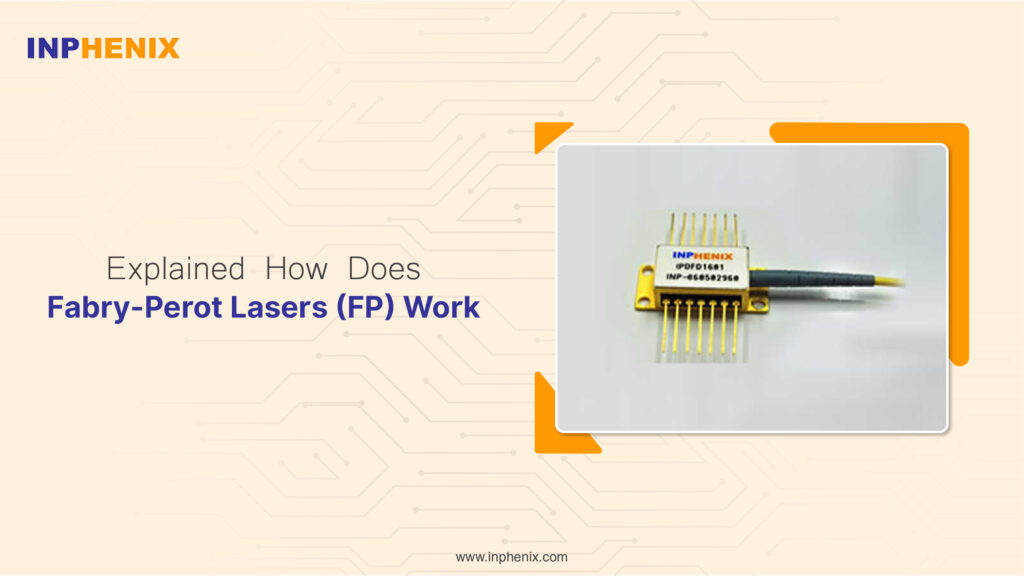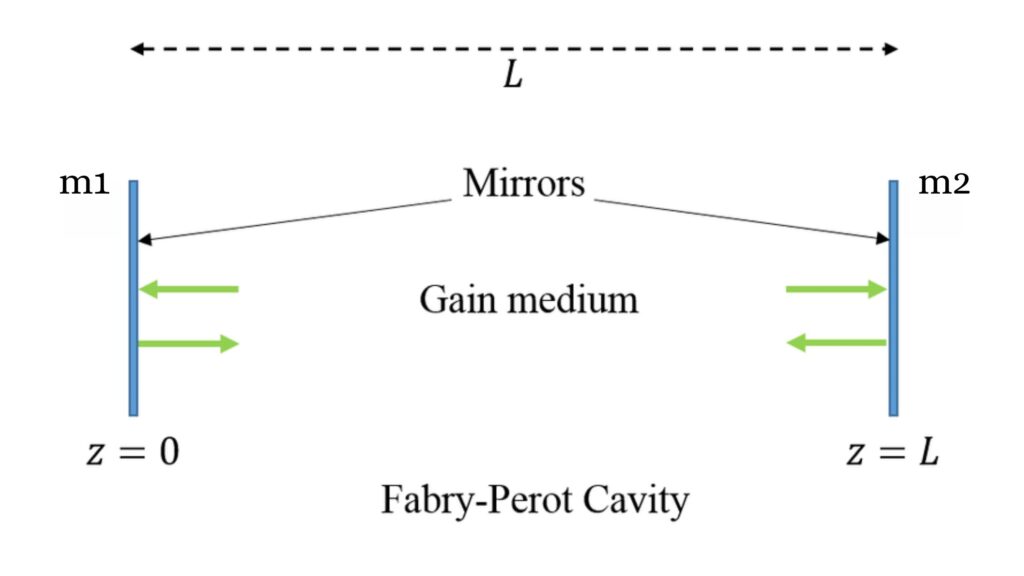
The Fabry Perot– FP laser, also known as the Fabry Perot Interferometer (FPI), is a type of laser that is widely used in the telecommunications industry, astronomy, and other fields. This laser’s primary application is for low-data-rate short-distance transmission over distances of up to 20 kilometers.
It should be noted that the FP laser is a more advanced version or substitute for the DFB (Distributed Feedback) laser.
The spectrum width is the fundamental distinction between DFB and Fabry Perot lasers. On the one hand, the Fabry Perot laser has a wide spectrum width and is a multi-longitudinal mode laser, whereas the DFB laser has a narrow spectrum width and is a single longitudinal mode laser.

The FP laser is the most basic type of semiconductor laser, with an active region in the center and two parallel mirrors on either side.
A laser is made up of two mirrors and the active medium that lies between them. The two mirrors provide positive feedback, which is the return of stimulated photons to an active medium to stimulate more photons.
The frequency of FP lasers is controlled by the spacing of mirrors at each end of the laser. This allows lasers to oscillate at the same time. This is referred to as mode hopping.

According to the diagram, the two mirrors form a resonator with a length– L. A random wave is reflected at m2 when it travels from one mirror (m1) to another (m2). The wave undergoes a 180-degree phase shift and a phase break.
When a stable wave passes through the FP laser’s resonator, it undergoes a 180-degree phase shift and continues to propagate. This wave continues to travel with the same phase shift as at mirror m1. In other words, a stable wave produces a stable pattern known as a standing wave.
The wavelength is the primary distinction between the random wave and the stable wave. That is, the resonator can only support waves of a specific wavelength – waves that form a standing pattern. Longitudinal modes are those whose wavelength is determined by the resonator. A resonator can support an infinite number of waves as long as they form a standing wave.
However, the active medium in the Fabry Perot laser only provides gain within a narrow wavelength range. Since laser radiation is generated by the interaction of a resonator and an active medium, only a few resonant wavelengths within the gain curve can be radiated.
Furthermore, light production begins only when gain exceeds loss. Only resonant wavelengths that fall within the gain or loss curve will eventually be linked. The FP laser generates lumped feedback, which results in a large number of longitudinal modes and, eventually, a relatively wide spectral width.
Although this laser can generate high powers, they are typically multimode at higher operating currents. That is how the FP laser works.
Inphenix is a light source manufacturing company based in the United States that specializes in a range of optical devices such as swept source lasers, Fabry Perot lasers, gain chips, distributed feedback lasers and VCSELs. Inphenix products are cutting-edge, affordable, and compatible with a wide range of devices.
